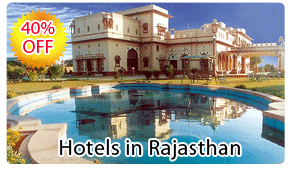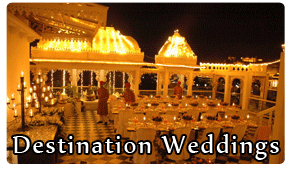
- perfectholidaytravel@hotmail.com
- +91 9811138106 / 9811 5939 89
Bharatpur City

Bharatpur - The 'Eastern Gateway to Rajasthan', was founded by Maharaja Suraj Mal in 1733 AD, it was once an impregnable well fortified city, carved out of the region formerly known as Mewat. The trio of Bharatpur, Deeg and Dholpur has played an important part in the history of Rajasthan.
The place was named as Bharatpur after the name of Bharat, the brother of Lord Rama, whose other brother Laxman was worshipped as the family deity of the Bharatpur. The legends say the rulers Laxman's name is engraved on the state arms and the seals. The city and the fort have been believed to be founded by Rustam, a Jat of Sogariya clan. Maharaja Suraj Mal took over from Khemkaran, the son of Rustam, and established the empire. He fortified the city by building a massive wall around the city.
The interesting aspect of the Bharatpur history is the domination of Jats in the region since 17th century. Leaders like Churaman and Badan Singh brought the jats together to mould them into a force to reckon with. Suraj Mal has been the greatest ruler who made them a formidable force and played a very important role in the Indian history during 19th century.
Keoladeo National Park
A paradise for the avian world, and the pilgrimage for the bird lovers, it was known as the best duck shooting resort in the British empire. But was declared a reserve for birds in 1956 and later upgraded to National Park. UNESCO has listed it as a world heritage site.
The geographical location is ideal as it is on the main North - South avian route of India. Although small in size, 29 sq. km. only, it boasts to house more than 375 species of beautiful birds, and more than 132 of them breed inside the Keoladeo Ghana National Park and nearly every year new ones are added to the list. The sanctuary not only attracts birds from India but also from places like Europe, Siberia, China and Tibet.
Before mansoon hundreds of these exotic birds roost and nest building activities start on the babool and kadam trees of the park. Water coming through the Ajan Bandh starts filling the various ponds and lakes of the Park. When assured of enough food, hundreds of large, medium and little cormorant, darter, purple and Grey heron, various species of egret, painted, open-billed, white necked and black necked stork, white ibis, spoonbill, night heron and other birds get busy in courting and mating. The trees are over flowed with nests, one can observe a tree housing nests upto fifties and sixties in number belonging to different species of birds looking after their loving young ones. The nests on the trees look like pearl necklaces.
Gracious Saras cranes, the tallest flight birds nest in exposed and open area, both partners share the duty of hatching, while chanting incubating duties, they come together, raise their neckand give out shrill trumpetic calls in unison and at the same time fan their feathers. The newly born chicks are only 10 cm. in size but grows upto one meter in height within a year.
As the monsoons arrive birds from every part of the country start pouring into the park. Migratory water-fowls, including the pride of Keoladeo Siberian Cranes form the indispensable part of Park. The water-fowls visit the park in millions during the month of October. The most noticeable water-fowl coming to the park are barheaded and greyleg geese. The ducks spotted here are pintail, common teal, ruddy shelduck, mallard, widgeon, shoveler,common shelduck, red crested pochard, gadwall etc. predatory birds like imperial eagle, steppe and tawny eagle spotted eagle, marsh harrier and laggar falcon are attracted towards the park completing the avian food chain of the ecosystem. Some of them like short-toed eagle, lesser spotted eagle and shikra are the residents of Park.
About 11 sq. km. area of the park is covered with water the remaining portion is rich with Kingfisher, Red Vented and white cheeked Bulbuls, Babblers, Quails, Partridges, Sunbirds, Sparrows and Parakeets which live in bushes and burrows. The year round activity of the winged beauties has made the park a pilgrimage for bird lovers and an omithologists delight.
The animal populace also show their presence although they are thoroughly dominated by feathers, wings and beaks. The animals include the Black Buck, Sambhar - the largest Indian Antelope, Spotted deer, and Nigais. Pythons can also be observed at some places lazing in the sun.
Vehicles are only permitted upto Shanti Kutir inside the park. The Electra Van of forest department can be engaged in the sanctuary, although the best way to explore the park is on foot or bicycles which are available on hire. Cycle rickshaws can also be hired.
Lohagarh Fort or The 'Iron Fort'
The Lohagarh Fort, true to its name stood solidly in front of many British attacks, and frustrated them to ends. It faced the British onslaught four times and after a long siege they had to withdraw, but Lord Lake, however was successful in capturing it in 1804.
It is very different from the other forts in state, there is no flamboyance associated to fort but it generates an aura of strength and magnificence. The fort is surrounded with moat which was previously filled with water to ward off the enemy attacks. The sandy ramparts were strengthened by sandy battlements, thus the enemy guns proved of no avail.
Some interesting monuments in the fort are Kishori Mahal, Mahal Khas and Kothi Khas. Moti Mahal and towers like Jawahar Burj and Fateh Burj were erected to commemorate the victory over the Mughals and the British army . The Gateway has paintings of huge elephants.
DEEG (34 km.)
North of Bharatpur is this beautiful garden town, the gardens have been laid with great care and precision, the sparkling fountains and meticulous palaces add to he beauty of this idyllic retreat of the princes of Bharatpur. The tourist enjoy the charming settings of this agricultural town,along with the well preserved palace pavilions and gardens.
Deeg Fort
The fort stands majestically over a slightly elevated point, built by Raga Suraj Mal. The fort is surrounded by impressive moats, armpits and gateways, the interiors are mostly in ruins now, but the watch tower still stands in the ruins keeping an eye over the City and Palace; over it is placed a gun captured from Agra fort.










